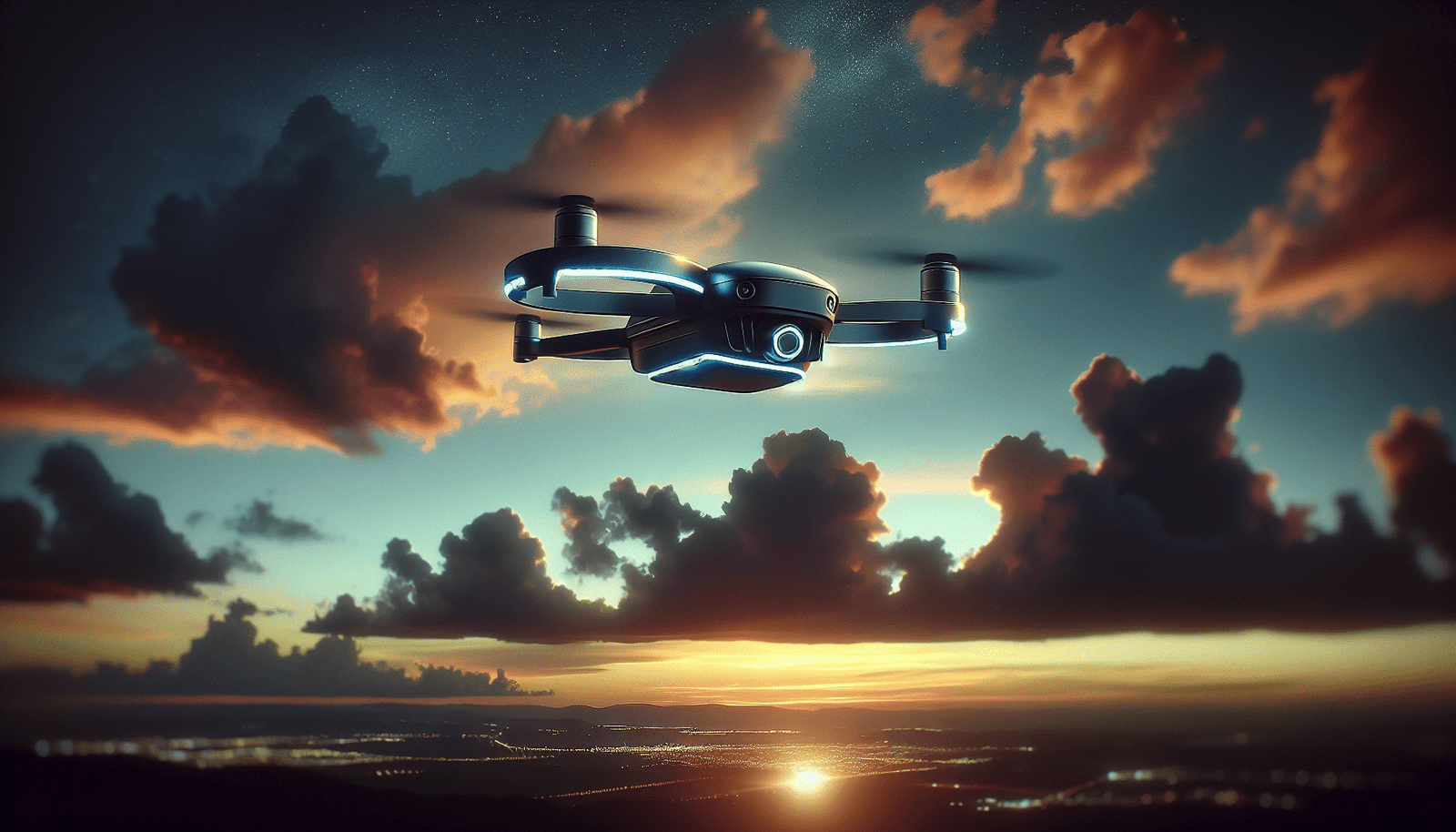Have you ever wondered how well a drone can capture stunning visuals in low-light conditions? If so, you’re in the right place. Today, we’re going to explore the impressive capabilities of the DJI Mini 3 Pro, particularly focusing on its performance under dimly lit circumstances. This drone packs a lot of technology into a small frame, making it essential for anyone interested in aerial photography or videography, especially when the sun sets.
Understanding Low-Light Conditions
Low-light conditions refer to settings where the available light is minimal. This usually occurs during the early morning or late evening, or in areas with shadows or overcast skies. In these situations, achieving clear and stable images or videos can be quite challenging for any camera, and drones are no exception.
When considering a drone for low-light performance, you should look for features like larger sensors, adjustable ISO settings, and advanced stabilization technologies. These factors determine how well your drone can function when light conditions aren’t ideal.
The Importance of Sensor Size
Sensor size plays a vital role in a camera’s ability to capture light. Larger sensors typically gather more light, which enhances photo quality in darker environments. The DJI Mini 3 Pro features a 1/1.3-inch CMOS sensor, which is relatively large for a drone of its size.
Here’s a quick comparison of sensor sizes among popular drones:
| Drone Model | Sensor Size |
|---|---|
| DJI Mini 3 Pro | 1/1.3 inch CMOS |
| DJI Mavic Air 2 | 1/2 inch CMOS |
| DJI Mavic Pro 2 | 1 inch CMOS |
| Autel Evo Lite | 1/1.28 inch CMOS |
You can see that the Mini 3 Pro boasts a competitive sensor size, which can make a difference in low-light performance.
Key Features That Enhance Low-Light Performance
Several characteristics and features assist the DJI Mini 3 Pro in capturing impressive imagery in low-light conditions.
High ISO Range
One of the standout features of the Mini 3 Pro is its high ISO capabilities. The ISO range allows the camera to be more sensitive to light. You can raise the ISO setting to capture brighter images without needing a flash.
The Mini 3 Pro offers an ISO range of 100 to 6400. This wide range is beneficial, as you can adjust it based on the specific conditions you’re facing.
Advanced HDR Capabilities
High Dynamic Range (HDR) photography captures a wider range of light levels, which is especially useful in low-light situations. The Mini 3 Pro utilizes advanced HDR algorithms to combine multiple shots into one, creating images with balanced exposure.
In practice, this means you’ll often end up with richer colors and clearer details in both the shadows and highlights, making your nighttime pictures and videos look significantly better.
Intelligent Night Mode
The DJI Mini 3 Pro comes equipped with an Intelligent Night Mode, which is designed specifically for low-light photography. This feature automatically adjusts camera settings to optimize image quality based on available light.
When you enable Night Mode, the drone captures several frames and stitches them together to produce a single shot with better clarity and less noise. This can be particularly handy when capturing nighttime cityscapes or starry skies.
Lens Quality
The lens on a drone is just as crucial as its sensor. The Mini 3 Pro features an f/1.7 aperture, which is quite wide. A wide aperture allows more light to hit the sensor, improving performance in darker environments.
Moreover, the lens quality helps to minimize distortion and maintain sharpness even in low-light settings.
Performance in Everyday Low-Light Situations
Understanding how the Mini 3 Pro performs in practical low-light scenarios can offer you better insight into its capabilities.
Sunrise and Sunset
Capturing images during the “golden hour” can yield breathtaking visuals. The soft light can help maintain details while enhancing colors. With the Mini 3 Pro, you can expect impressive captures during these times thanks to its capable sensor and lens.
Nighttime Cityscapes
When flying in urban areas after dark, you’ll notice ample opportunities to capture illuminated city vistas. The Mini 3 Pro effectively manages reflections and light sources, providing images that are both vibrant and detailed. Night Mode can further enhance these visuals, ensuring you don’t miss out on those magical skylines.
Indoor Environments
Indoor settings with minimal light can be tricky for most cameras, but the Mini 3 Pro can handle these challenges quite well. With its HDR capabilities and carefully tuned settings, you’ll be able to capture moments in a dimly lit room without sacrificing quality.
Key Settings to Consider for Low-Light Shooting
Successfully capturing low-light imagery involves some understanding of camera settings. Here are some key components you should consider when shooting with the DJI Mini 3 Pro in lower lighting.
Exposure Settings
- Shutter Speed: Slower shutter speeds allow more light to enter the lens but can result in motion blur if the drone is not stable. A balance is necessary.
- ISO Levels: Don’t hesitate to increase the ISO in darker settings. However, be cautious—very high ISO can introduce noise to your images.
Focus Settings
With less light, autofocus may struggle to find its mark. Consider switching to manual focus in challenging light situations to hone in on your subject accurately.
White Balance Adjustments
Changing the white balance to match your environment is critical. Neutral settings often yield the best outcome, but don’t be afraid to experiment with cooler or warmer tones based on your artistic vision.
Post-Processing Options
Once you’ve captured your images or videos with the DJI Mini 3 Pro, post-processing plays a crucial role, especially in low-light conditions.
Noise Reduction Techniques
Often, images taken at higher ISO levels will have visible noise. Editing software can help you reduce this noise while retaining the overall quality of the image. Tools like Adobe Lightroom or Photoshop offer excellent noise reduction features.
Adjusting Brightness and Contrast
Fine-tuning brightness and contrast can help bring out shadows and highlight details in your low-light shots. Ensuring balanced exposure is key here.
Color Grading
Color grading allows you to create a specific mood or feel in your shots. Whether you want a warm, cozy atmosphere or a cooler, more dramatic tone, post-processing can help elevate your images to new heights.
Battery Life Considerations in Low-Light Conditions
Fly time can sometimes be affected by various factors, including environmental conditions. In colder or night conditions, you may notice your battery drains faster. It’s important to plan ahead and monitor your battery life closely while shooting in low light.
What Impacts Battery Performance?
- Temperature: Extreme temperatures can reduce battery efficiency.
- Flight Patterns: Aggressive flying can cause rapid battery drain. Gentle, smooth maneuvers not only help with capturing clearer images but can enhance battery longevity.
Length of Flight
Expect to get a similar flight time during twilight or nighttime. Typically, the DJI Mini 3 Pro offers around 34 minutes of flight time in optimal conditions. Always keep an eye on your battery meter to ensure a safe return.
Tips for Achieving the Best Low-Light Shots
To maximize your low-light shooting experience with the Mini 3 Pro, consider the following tips:
Experiment with Off-Camera Flash
While drones do not traditionally use flashes, you can creatively use external lighting sources if stationary or during video sessions. Arranging an external flash or LED light can help light your subject without simply relying on ambient light.
Use the RAW Format
Shooting in RAW allows you more flexibility in post-processing. Since RAW files capture more detail than JPEGs, you can make significant adjustments without sacrificing image quality.
Static vs. Dynamic Shots
Depending on your subject, you might want to consider taking static shots instead of moving while capturing. A stable shot allows more light in, resulting in clearer images.
Conclusion: The Mini 3 Pro’s Low-Light Performance
As you can see, the DJI Mini 3 Pro offers several features that make it remarkably capable in low-light conditions. From its larger sensor to innovative settings and modes, you’ll find that this drone can deliver images that are both beautiful and detailed, even when the illumination is less than ideal.
The combination of technologies, high ISO capabilities, advanced HDR options, and thoughtful post-processing techniques allows you to overcome the challenges typical of low-light photography.
If low-light scenarios are part of your photography plans, the Mini 3 Pro could be an undeniably great choice. Remember, it’s not just about the gear; you bring your creativity and perspective—those are just as crucial in capturing the perfect shot.

